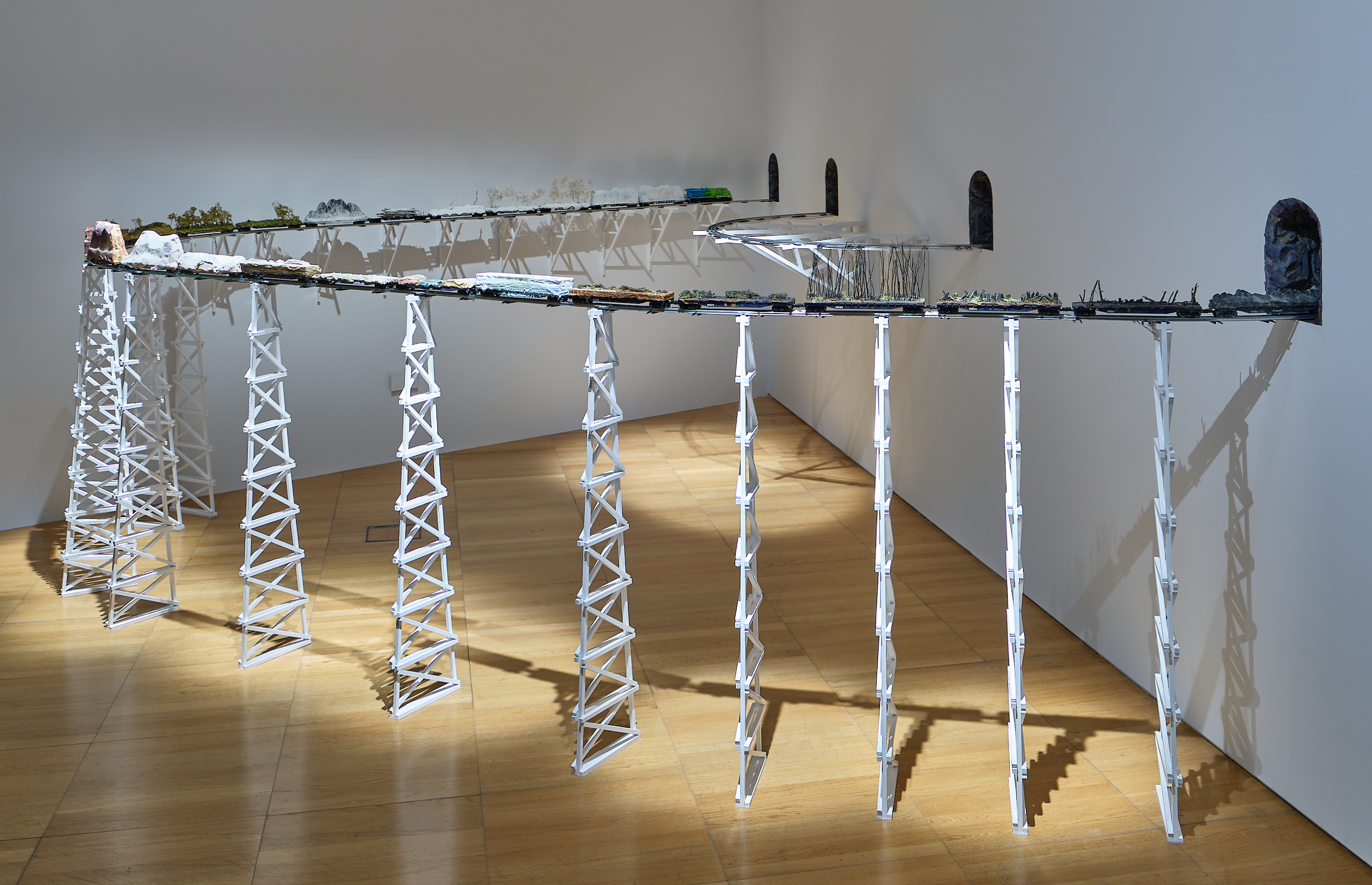
TRANSCONTINENTAL DIVIDE (2020–2023)
26 train cars with engine (0 scale), recycled foam, vinyl paste, acrylic paint, colored sand, eco-clear cast plastic, wood, plywood, foam, plastic, paint, branches, dirt, natural and recycled material
20′ x 100′ x 4.5′ (240′ of tracks, 40.5′ of train landscapes)
The artist made these miniature landscape sculptures in response to places he has studied: the Arctic, the Gobi Desert, the bayous of Florida, the forests of Haiti. Half of the sculptures are of places he encountered during his residency in the UAE. These sculptures rehearse healthy and devastated ecosystems. By offering us a moment of child-like imagination with these miniature worlds, the artist gently invites us to confront the specter of climate change with curiosity and contem-plation, rather than the “eco-anxiety” associated with the news cycle.
The trains themselves do double work: they point to the beginning of the problem and offer a proposal for its solution. Trains inaugurated the industrial revolution—at least symbolically—which, in turn, is seen as the beginning of the Anthropocene (the era in which the impact of human activities triggers distinct geologic change). Trains, historically, were coal-driven, a massive source of carbon emissions, which cause global warming. And yet, today’s trains emit as much as 80 percent less carbon than planes and cars. And with recent innovations in fueling, trains hold more hope than almost any other fuel-powered mode of transportation, especially for cargo so often trucked across continents. The train then signals a possibility of relief: what if we moved the world with trains instead?
Commissioned by The NYU Abu Dhabi Art Gallery
Photographer: John Varghese
Associated projects: Research: Himalayas, Nomadic Landscape, Pyramiden/ Permafrost




